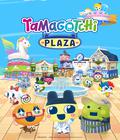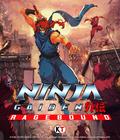Genre: RPG
Publisher: Atari
Developer: Obsidian
Release Date: September 2006
Bioware has done as they did with Knights of the Old Republic 2, and handed off development on the new Neverwinter Nights game to Obsidian. Obsidian, in turn, has promised to “up the ante” on what was already one of the most popular and addictive PC game sout there, delivering an improved toolset and a strong singleplayer storyline.
Obsidian has reviewed four years’ worth of feedback on the original Neverwinter Nights, and are improving the game accordingly. “We’ve been able to up the ante,” they’ve said, with a graphical overhaul, the ability to add your own videos to your custom adventures, and an adventure generation toolset that features many new options.
That toolset is admittedly “relatively complicated,” but Obsidian’s working on video tutorials to help users with its learning curve. It’s still basically tile-based when you’re indoors, but they’ve added handy exterior environments, which are designed more in the way you’d design an RTS environment.
The user can play with local topography, as well as spell and lighting effects, to make it look like you’re, for example, in another plane of existence. You can also set up custom tilesets, allowing you to play with various props, stacking them on top of each other or setting up custom arrangements. The example that Obsidian used is a tavern counter; you can arrange items on top of it in a custom configuration, place your custom countertop in a tavern you’re creating, then alter the arrangement of props on the countertop as you see fit.
Obsidian’s tried to take everything they learned, both at Black Isle and as Obsidian, and incorporate it into the singleplayer campaign, which is set on the Sword Coast. Various features from KOTOR2 have found their way into this game, such as the influence mechanic, allowing you to gain or lose loyalty with your party members according to your actions. A couple of new features that weren’t in KOTOR2 are here too, such as more character interaction and the ability to change your camera perspective during cinematic sequences.
You can create a starting character using what’s apparently Wizards of the Coast’s standard-issue character generation system, assigning points to your character’s stats as you desire, and select from among quite a few races and classes. All the AD&D standards are available, as well as drow elves (I don’t think it’s possible to have a Forgotten Realms video game anymore without the option to play it as a drow elf; thank you, R.A. Salvatore!) and “planetouched,” humans with a streak of demonic or angelic blood in their veins. Since the version of Neverwinter Nights 2 that was shown off at E3, Obsidian’s polished up the interface a bit, as well as added a new playable character class: the warlock.
The singleplayer campaign was built with an eye towards making the player feel like they’re part of an epic storyline. You can take various starting feats, such as Flirt, Troublemaker, or Wizard’s Apprentice, to determine your character’s role in the village where you start and allow you to feel like you’re really a part of the world as it stands. Your alignment is determined fluidly by your actions, moving along an axis of Good, Evil, Law, and Chaos.
One big change to the playing style from the first game is that the radial menu for spellcasting has been removed, and replaced with a narrower quick-cast menu. All you have to do is click on a spell icon in a list, and you’ll be given a targeting reticule to give you an idea of the spell’s area of effect.
The campaign will follow an AD&D-style arc, where you begin as a novice in the class you chose, doing errands for your foster parents, and end up as a general during massive battles of conquest and control. At one point, you’ll even be able to take over and maintain your own stronghold, then go out and recruit people to come and reinforce it, Suikoden-style.
Further, the amount of effort you’ve put into maintaining your followers’ equipment and morale will influence your endgame. There are two endings to the game, with a variety of epilogues revisiting what you’ve done over the course of the campaign.
I was never a big Neverwinter Nights player, but I have friends who’ve lost days and weeks of their life to the original game. Neverwinter Nights 2 seems to be on track to do more or less anything you could want from a sequel to what’s already an addictive game with a large community supporting it: do the same thing, but better, and more of it.
More articles about Neverwinter Nights 2











 Bards sing tales of heroes from ages past, but never have the Forgotten Realms so desperately needed a champion. Years have passed since the war between Luskan and Neverwinter, almost enough time for the wounds of war to heal. But the brief peace the Realms have known may be at an end. Tension growing between the mighty city-states means the Sword Coast again teeters on the edge of open war. Unnoticed, a greater danger stalks the City of Skilled Hands. Unbeknownst to the denizens of the North, deep in the Mere of Dead Men, dark forces from across the Realms have been rallied under the banner of a legendary evil. If left unchallenged, all of the North is doomed to fall under its power.
Bards sing tales of heroes from ages past, but never have the Forgotten Realms so desperately needed a champion. Years have passed since the war between Luskan and Neverwinter, almost enough time for the wounds of war to heal. But the brief peace the Realms have known may be at an end. Tension growing between the mighty city-states means the Sword Coast again teeters on the edge of open war. Unnoticed, a greater danger stalks the City of Skilled Hands. Unbeknownst to the denizens of the North, deep in the Mere of Dead Men, dark forces from across the Realms have been rallied under the banner of a legendary evil. If left unchallenged, all of the North is doomed to fall under its power.























